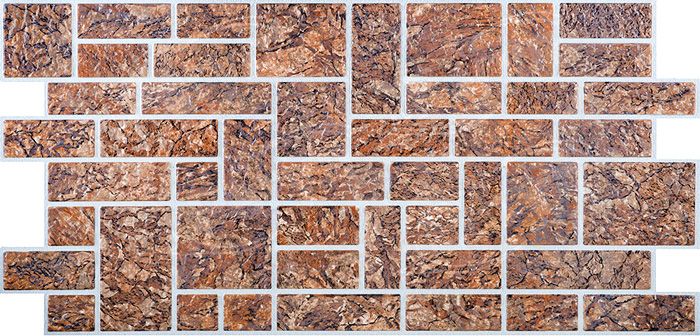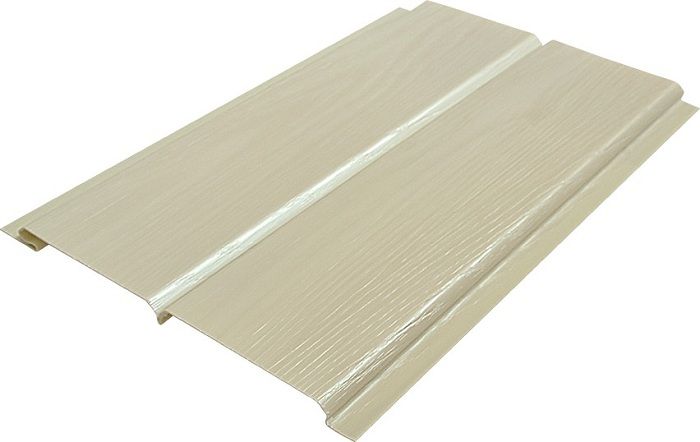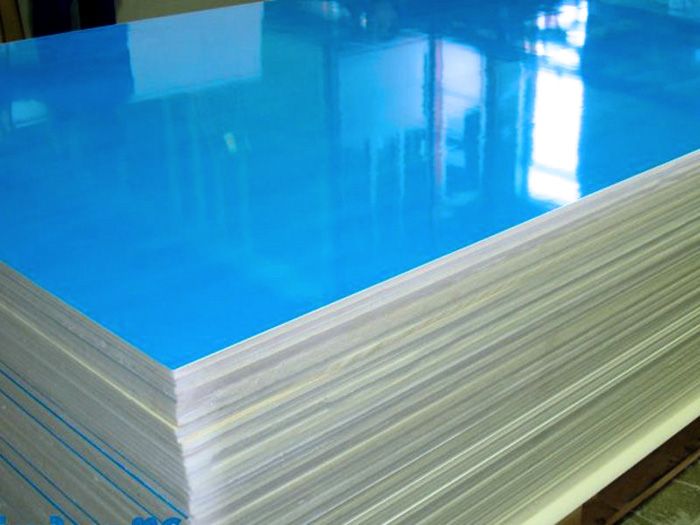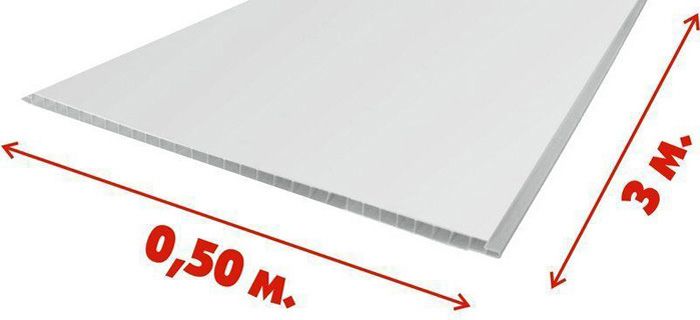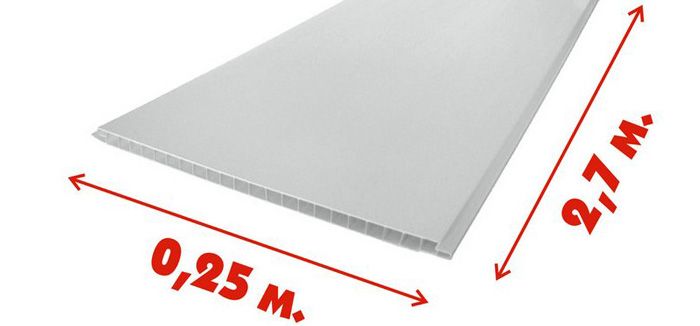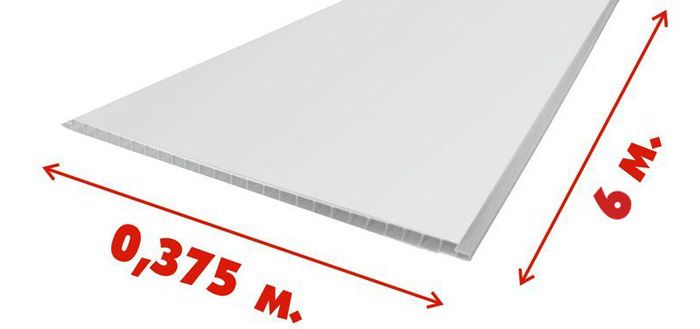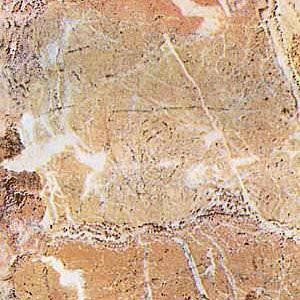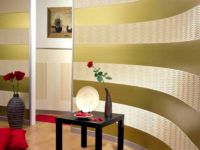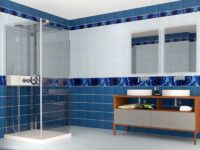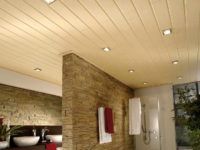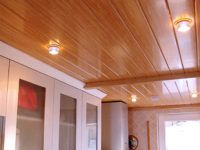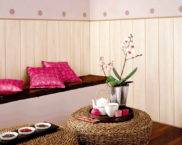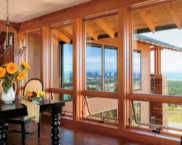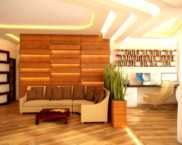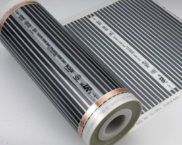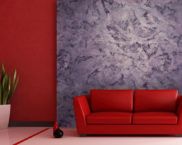PVC panels: sizes, types and prices
Plastic panels, having just appeared on the market, immediately gained immense popularity, because they have excellent technical and operational characteristics, where their high moisture resistance stands out first. It is one hundred percent, so the material was immediately used in damp rooms: bathrooms, toilets and kitchens. First, they were used to sheathe the ceilings, then the craftsmen adapted them for wall cladding, since it turned out to be just as easy to do as on the ceiling surface. Therefore, there is a need to understand what PVC panels are. Sizes, varieties, pros and cons - in our today's review.
The content of the article
- 1 Advantages and disadvantages of PVC panels
- 2 Varieties and where they can be used
- 3 Main types, sizes, prices and characteristics of PVC ceiling panels
- 4 The main types, sizes, prices and characteristics of PVC panels for walls
- 5 Selection rules
- 6 Video: installation of PVC panels on the wall using starting, joint and corner profiles for PVC panels
Advantages and disadvantages of PVC panels
Let's start with the merits:
- They have not only one hundred percent moisture resistance, but also lightfastness, plus good protective qualities to other influences.
- Low specific weight, which makes it easy to work with them.
- Thick panels have good soundproof properties.
- Simple processing, you can cut a PVC product with almost the same tools that cut wood or metal.
- The panels adhere well to each other and to the surface to be finished with almost any adhesives.
- PVC does not burn.
- This is an environmentally friendly material, because it does not emit substances harmful to humans into the air either under the influence of temperature extremes, but when humidity changes.
- A huge variety of colors. In the production process, decoration is carried out with the help of coloring, polymer film, as well as with the help of modern silk-screen and solvent printing technologies.
- Today, for ease of installation and to give the finishing surface a finished presentable look, manufacturers offer various additional moldings. These are profiles that cover the junction of the material with adjacent surfaces, skirting boards, corner elements and others.
- These are several varieties in terms of dimensional indicators, which makes it possible to select a specific product for cladding a ceiling or wall at a lower cost by reducing waste. The dimensions of the plastic panels are the main selection criterion.
- Easy to install.
- Low price.
- Practicality. Polyvinyl chloride products can be washed with any household liquid products (gels, pastes, etc.).
- The service life of a quality material (guaranteed) is 20 years.
- It is a versatile material in terms of installation.
As for the shortcomings, there are only two positions: not very high mechanical strength, especially impact, and the finishing material does not withstand low temperatures, at which it becomes brittle and brittle. Therefore, PVC panels are not recommended for exterior decoration... Although today some manufacturers offer frost-resistant models.
Varieties and where they can be used
Today manufacturers offer three varieties:
- sheet PVC panels;
- lining;
- tiles.
Basically, they all differ from each other in terms of size and level of rigidity. Accordingly, everyone has a different purpose, although, as practice shows, there are no strict restrictions. For example, lining, which is usually used for cladding ceiling surfaces, feels great on the wall. The same can be said for other species.
Lining dimensions
At the very beginning of the production of PVC panels, the lining was produced in a standard width - 10 cm. And today this size is the main one for European manufacturers. As for the length, the standard is 3 m. Today the Russian market is filled with Asian products, where the variety of size indicators is much wider. On the one hand, this is an advantage, on the other, a disadvantage.
It is possible to select panels in width so that there are fewer joints on the ceiling. And this is less profile for lining and less fasteners. On the other hand, it may turn out that an identical panel with the required width cannot be found for the repair of PVC cladding.
Asian manufacturers offer lining up to 37 mm wide, and the length is three dimensional values: 2.6; 2.7 and 3 m. As for the thickness, all manufacturers adhere to two standards: 5 mm and 8-10 mm. The second position is considered a wall position, because on this plane the panels are subjected to higher loads than on the ceiling, which means that their thickness should be greater. When buying a cladding, it is imperative to compare the thickness of the panel with the dimensions of the purchased moldings. They must match.
Attention! European goods are divided into two categories, which differ in the width of the tongue-and-groove connection. Panels with a wide lock are called by masters "European", with a narrow "polka".
Tile dimensions
Tiles from lining differ in the absence of connecting seams. That is, it is a purely flat panel without grooves that simulate a joint. Most often these are square-shaped tiles with dimensions from 0.3 x 0.3 to 0.9 x 0.9 m.
On the market, PVC boards are represented by a material without a tongue-and-groove connecting element. Most often these are either rustic joints, that is, with a chamfer, or seamless - this is when the panels are stacked end-to-end next to each other. There is a seam at the junction, but it is almost invisible due to the smooth edges of the tiles. Considering all the nuances assembly technology, it is possible to achieve accuracy of laying, which will ensure a seamless structure.
It should be noted that PVC tiles react negatively to temperature changes. Under such a load, their size and shape change. Therefore, it is recommended to very carefully select the material, depending on its quality characteristics.
As for rustic models, they differ from seamless ones precisely by the presence of a chamfer. Basically, it is a recess in one end of the slab where the opposite edge is inserted.Such material can be used for both ceilings and wall cladding. In this regard, seamless lamellas are used only for decorating the ceiling.
Today manufacturers offer boards with a relief surface. They differ not only in their unusual appearance, but also in increased strength. Increasingly, such panels are used for outdoor use. For example, they are sheathed plinths of foundations and even walls. They are often referred to as siding because, as such, these panels are not a purely plastic product. But their lining is polyvinyl chloride.
Related article:
Those who independently make repairs in the house are interested in knowing how to fix PVC panels to the wall and ceiling... Useful recommendations from our article will tell you how easy and simple it is to use this material, what are the ways to fix the panels, and also how to do this work in stages.
Sheet sizes
From the name itself, it becomes clear that these are just PVC sheets, hence their significant dimensional characteristics in comparison with previous varieties.
- Width - 80 ÷ 203 cm.
- Length - 150 ÷ 405 cm.
- Thickness - 1 ÷ 30 mm.
Dimensions of PVC siding
Manufacturers produce a standard size of one sheet - it is 500 × 1000 mm. That is, two panels form 1 m². Certain errors are allowed by the standards, but not more than 5 ÷ 8 mm per side. However, it should be noted that there are collections with sizes that differ from the standard ones. Such panels are produced according to technical specifications. For example:
- the “brick” model is produced with dimensions 1130 × 468 × 17 mm;
- "Rocky stone" - 1168 × 448 × 23 mm.
Attention! PVC siding is not recommended for use in northern regions with low temperatures in winter. He just can't stand them.
Sizes of sandwich panels
It is probably difficult to mention sandwich panels in the PVC finishing category. But if this material is covered on both sides with a sheet view, then it automatically falls into this category. Firstly, the distinctive feature of sandwich panels from other varieties is their thickness, which has four standards: 10, 24, 32 and 40 mm.
Secondly, this is a purely wall option, they are not installed on the ceiling. Thirdly, it is the most expensive variety of all plastic panels. At the same time, manufacturers offer three classes of sandwich panels, which differ from each other in technical characteristics, and, accordingly, in price. You can buy PVC panels of this type today at the following prices:
| Material class | Thickness, mm | price, rub. |
|---|---|---|
| Economy | 10 | 900 |
| 24 | 1520 | |
| 32 | 1720 | |
| 40 | 1930 | |
| Station wagon | 10 | 950 |
| 24 | 1600 | |
| 32 | 1770 | |
| 40 | 1980 | |
| Premium | 10 | 1000 |
| 24 | 1650 | |
| 32 | 1820 | |
| 40 | 2050 |
As for the length of the material, it is standard - 3 m, although there are also smaller panels. Width varies from 0.9 to 1.5 m. Both the dimensions of the material and its strength guarantee its high bearing capacity. That is why it is very often used for the construction of partitions. So to say, two in one: this is both a decorative filling at once, and a supporting structure.
Main types, sizes, prices and characteristics of PVC ceiling panels
From all of the above, we can conclude that PVC ceiling panels are a material of small thickness. For slabs and sheets –4 ÷ 5 mm, for lining - 8 mm. This is due to the fact that the material on the ceiling will not be subjected to serious loads, which means that there is no need for cladding to use thick and very durable models that are more expensive than wall counterparts. That is, the price, in turn, determines which category the chosen plastic material belongs to.
It is said about the dimensions, now with regard to the prices of PVC panels for the ceiling:
The main types, sizes, prices and characteristics of PVC panels for walls
With the dimensions for PVC panels for walls, everything is also clear. The main parameter is that the thickness should not be less than 10 mm. In addition, it should be noted that the bulk of sheet types do not belong to the category of wall panels. In any case, it is imperative to take into account the thickness of the product when choosing.As for the other sizes of PVC wall panels, there are no strict restrictions and requirements.
Now about the price of this type of PVC panels:
Related article:
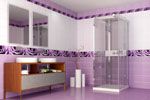 Do you want to know about such an interesting finishing material as decorative panels for interior wall decoration? Read our article. You will learn about the advantages and types of products, how to do it yourself, the secrets of operation in damp and warm rooms.
Do you want to know about such an interesting finishing material as decorative panels for interior wall decoration? Read our article. You will learn about the advantages and types of products, how to do it yourself, the secrets of operation in damp and warm rooms.
Selection rules
In principle, all the selection criteria have already been said. But there is another side to the issue - this is the decorative filling of the room, where PVC panels will be used. The choice is really huge, so it is very important to correctly approach the solution of the problem related to the design of the room. Therefore, several photos of PVC panels in different rooms:











